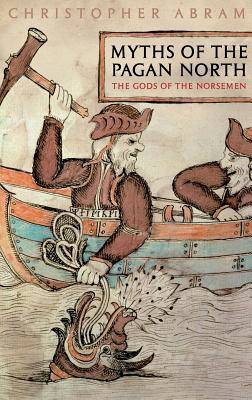
- Afhalen na 1 uur in een winkel met voorraad
- Gratis thuislevering in België vanaf € 30
- Ruim aanbod met 7 miljoen producten
- Afhalen na 1 uur in een winkel met voorraad
- Gratis thuislevering in België vanaf € 30
- Ruim aanbod met 7 miljoen producten
Zoeken
€ 60,95
+ 121 punten
Omschrijving
As the Vikings began to migrate overseas as raiders or settlers in the late eighth century, there is evidence that this new way of life, centred on warfare, commerce and exploration, brought with it a warrior ethos that gradually became codified in the Viking myths, notably in the cult of Odin, the god of war, magic and poetry, and chief god in the Norse pantheon.
The twelfth and thirteenth centuries, when most of Scandinavia had long since been converted to Christianity, form perhaps the most important era in the history of Norse mythology: only at this point were the myths of Thor, Freyr and Odin first recorded in written form. Using archaeological sources to take us further back in time than any written document, Â the accounts of foreign writers like the Roman historian Tacitus, and the most important repository of stories of the gods, old Norse poetry and the Edda, Christopher Abram leads the reader into the lost world of the Norse gods.
The twelfth and thirteenth centuries, when most of Scandinavia had long since been converted to Christianity, form perhaps the most important era in the history of Norse mythology: only at this point were the myths of Thor, Freyr and Odin first recorded in written form. Using archaeological sources to take us further back in time than any written document, Â the accounts of foreign writers like the Roman historian Tacitus, and the most important repository of stories of the gods, old Norse poetry and the Edda, Christopher Abram leads the reader into the lost world of the Norse gods.
Specificaties
Betrokkenen
- Auteur(s):
- Uitgeverij:
Inhoud
- Aantal bladzijden:
- 272
- Taal:
- Engels
Eigenschappen
- Productcode (EAN):
- 9781847252470
- Verschijningsdatum:
- 5/05/2011
- Uitvoering:
- Hardcover
- Formaat:
- Genaaid
- Afmetingen:
- 155 mm x 236 mm
- Gewicht:
- 566 g

Alleen bij Standaard Boekhandel
+ 121 punten op je klantenkaart van Standaard Boekhandel
Beoordelingen
We publiceren alleen reviews die voldoen aan de voorwaarden voor reviews. Bekijk onze voorwaarden voor reviews.








